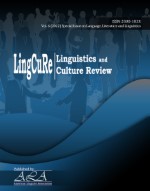The existence of tourism higher education under the ministry of tourism and creative economy (PTNP) toward Indonesia’s golden generation 2045
Keywords:
creative economy, existence, higher education, Indonesia golden generation 2045, tourismAbstract
The purpose of this study was to analyze and determine the strategy of Tourism Higher Education (PTNP) operated by the Ministry of Tourism and Creative Economy Republic of Indonesia towards vision Indonesia’s Golden Generation 2045. This research is a policy research to solve social problems that aims to identify the implementation of adaptation, innovation, and collaboration strategy. The results of this study indicated that Tourism Higher Education (PTNP) in the face of two main trends, namely globalization and pandemic COVID-19. The winning strategy of Tourism Higher Education (PTNP) were, 1) Adaption strategy, by provided facilities and support the lecturer and faculty members to use hightech and also strictly discipline with CHSE standard to protect the spread of COVID-19 pandemic. 2) Innovation strategy, by using hightech in education and curriculum designed to facilitate long distance learning as well as the development of big data for personnel, finance, logistics and students so that it will facilitate access to information and strategic decision making. 3) Collaboration strategy, by sharing utilization and industry expert on training and education as well as job recruitment and internship program.
Downloads
References
Allui, A., & Sahni, J. (2016). Strategic human resource management in higher education institutions: empirical evidence from Saudi. Procedia-Social and Behavioral Sciences, 235, 361-371.
Alsharif, H. (2020). Phonology, phonetic and phonological aspects. Macrolinguistics and Microlinguistics, 1(1), 52–68. Retrieved from https://mami.nyc/index.php/journal/article/view/5
Barney, J. B., & Wright, P. M. (1998). On becoming a strategic partner: The role of human resources in gaining competitive advantage. Human Resource Management: Published in Cooperation with the School of Business Administration, The University of Michigan and in alliance with the Society of Human Resources Management, 37(1), 31-46.
Boccella, N., & Salerno, I. (2016). Creative economy, cultural industries and local development. Procedia-Social and Behavioral Sciences, 223, 291-296. https://doi.org/10.1016/j.sbspro.2016.05.370
Burak, S., Dogan, E., & Gazioglu, C. (2004). Impact of urbanization and tourism on coastal environment. Ocean & Coastal Management, 47(9-10), 515-527. https://doi.org/10.1016/j.ocecoaman.2004.07.007
Fadel, C., & Trilling, B. (2010). 21st Century Skills: Learning for Life in Our Times. Education Review.
Harrison, G. W., & Rutström, E. E. (2008). Experimental evidence on the existence of hypothetical bias in value elicitation methods. Handbook of experimental economics results, 1, 752-767. https://doi.org/10.1016/S1574-0722(07)00081-9
Hasani, K., & Sheikhesmaeili, S. (2016). Knowledge management and employee empowerment: A study of higher education institutions. Kybernetes.
Hill, H., & Wie, T. K. (2012). Indonesian universities in transition: Catching up and opening up. Bulletin of Indonesian Economic Studies, 48(2), 229-251.
Islahuddin, I., Akib, H., Eppang, B. M., Salim, M. A. M., & Darmayasa, D. (2021). Reconstruction of the actor collaboration model in the development of marine tourism destinations in the new normal local economy. Linguistics and Culture Review, 5(S2), 1505-1520. https://doi.org/10.21744/lingcure.v5nS2.2013
Kasni, N. W., & Budiarta, I. W. (2021). The multimodal forms of tourism promotional discourse in the age COVID-19. International Journal of Linguistics, Literature and Culture, 7(6), 422-440. https://doi.org/10.21744/ijllc.v7n6.1945
Kementerian Pendidikan dan Kebudayaan Republik Indonesia. (2017). Peta Jalan Generasi Emas Indonesia 2045
Lawler, E. E., & Mohrman, S. A. (2003). HR as a strategic partner: what does it take to make it happen?. Human Resource Planning, 26(3), 15-29.
Luthe, T., & Wyss, R. (2014). Assessing and planning resilience in tourism. Tourism Management, 44, 161-163. https://doi.org/10.1016/j.tourman.2014.03.011
Nesterchuk, I., Balabanyts, A., Pivnova, L., Matsuka, V., Skarha, O., & Kondratenko, I. (2021). Gastronomic tourism: Features and development tools. Linguistics and Culture Review, 5(S4), 1871-1885. https://doi.org/10.21744/lingcure.v5nS4.1877
Nuraini, N., Khairudin, K., & Apri, M. (2020). Modeling simulation of COVID-19 in Indonesia based on early endemic data. Communication in Biomathematical Sciences, 3(1), 1-8.
Poria, Y., Butler, R., & Airey, D. (2003). The core of heritage tourism. Annals of tourism research, 30(1), 238-254. https://doi.org/10.1016/S0160-7383(02)00064-6
Pucciarelli, F., & Kaplan, A. (2016). Competition and strategy in higher education: Managing complexity and uncertainty. Business Horizons, 59(3), 311-320. https://doi.org/10.1016/j.bushor.2016.01.003
Rinartha, K., Suryasa, W., & Kartika, L. G. S. (2018). Comparative Analysis of String Similarity on Dynamic Query Suggestions. In 2018 Electrical Power, Electronics, Communications, Controls and Informatics Seminar (EECCIS) (pp. 399-404). IEEE.
Rokhman, F., Hum, M., & Syaifudin, A. (2014). Character education for golden generation 2045 (national character building for indonesian golden years). Procedia-Social and Behavioral Sciences, 141, 1161-1165. https://doi.org/10.1016/j.sbspro.2014.05.197
Schleicher, A. (2020). The impact of COVID-19 on education insights from education at a glance 2020. Retrieved from oecd. org website: https://www. oecd. org/education/the-impact-of-covid-19-on-education-insights-education-at-a-glance-2020. pdf.
Subramony, M. (2006). Why organizations adopt some human resource management practices and reject others: An exploration of rationales. Human Resource Management: Published in Cooperation with the School of Business Administration, The University of Michigan and in alliance with the Society of Human Resources Management, 45(2), 195-210.
Sung, T. K. (2015). The creative economy in global competition. Technological Forecasting and Social Change, 96, 89-91. https://doi.org/10.1016/j.techfore.2015.04.003
Tierney, W. G., & Lanford, M. (2016). Conceptualizing innovation in higher education. In Higher education: Handbook of theory and research (pp. 1-40). Springer, Cham.
Van Dinther, M., Dochy, F., & Segers, M. (2011). Factors affecting students’ self-efficacy in higher education. Educational research review, 6(2), 95-108. https://doi.org/10.1016/j.edurev.2010.10.003
Wendri, I. G. M., Bakta, I. M., Suprapti, N. W. S., & Ardika, I. W. (2019). Various factors contributive toward tourist intention in enjoying wellness tourism. International Journal of Linguistics, Literature and Culture, 5(3), 61-70. https://doi.org/10.21744/ijllc.v5n3.646
White, S. C., & Glickman, T. S. (2007). Innovation in higher education: Implications for the future. New Directions for Higher Education, 2007(137), 97-105.
Yu, J., Tahmasebi, A., Han, Y., Yin, F., & Li, X. (2013). A review on water in low rank coals: The existence, interaction with coal structure and effects on coal utilization. Fuel Processing Technology, 106, 9-20. https://doi.org/10.1016/j.fuproc.2012.09.051
Published
How to Cite
Issue
Section
Copyright (c) 2022 Linguistics and Culture Review

This work is licensed under a Creative Commons Attribution-NonCommercial-NoDerivatives 4.0 International License.














